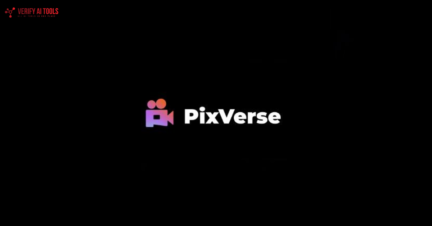In 2025, creating high-quality content is essential for businesses, bloggers, and marketers, but professional writing services or premium tools can be costly. Free AI writing tools offer a game-changing solution, enabling anyone to produce engaging, SEO-optimized content without breaking the bank. These tools leverage advanced language models to generate blog posts, social media captions, emails, and more, aligning with Google’s March 2025 Core Update emphasis on user-focused, authentic content. This article explores the best free AI writing tools, their features, benefits, and how to use them effectively for content creation, all while incorporating semantic SEO strategies to boost visibility.
Why Free AI Writing Tools Matter in 2025
AI writing tools have democratized content creation, allowing small businesses, startups, and individuals to compete with larger players. Post-Google’s March 2025 Core Update, which prioritizes people-first content and penalizes low-value, programmatic pages, these tools are invaluable for crafting original, intent-driven content. Key benefits include:
-
Cost Efficiency: Free tools eliminate the need for expensive writers or subscriptions.
-
Time Savings: Generate drafts in minutes, freeing up time for strategy and editing.
-
SEO Alignment: Many tools suggest keywords and optimize for user intent, boosting search rankings.
-
Versatility: Create diverse content, from blog posts to ad copy, tailored to your niche.
With the right approach, free AI writing tools can deliver professional-grade results on a $0 budget.
Top Free AI Writing Tools in 2025
Below are the best free AI writing tools available in 2025, selected for their functionality, ease of use, and alignment with SEO best practices. Each offers robust free plans with optional premium upgrades.
1. ChatGPT (Free Plan)
-
Overview: Powered by OpenAI’s GPT-4o model, ChatGPT is a versatile conversational AI that excels at generating human-like text for blogs, emails, and creative writing.
-
Key Features:
-
Customizable prompts for tailored outputs (e.g., “Write a 500-word blog on SEO trends”).
-
Supports multiple languages and tones (formal, casual, persuasive).
-
Basic keyword suggestions for SEO optimization.
-
-
Limitations: Free plan has usage caps (e.g., limited queries per day) and lacks advanced analytics.
-
Best For: Bloggers and small businesses needing quick drafts or brainstorming ideas.
-
SEO Tip: Use prompts like “Write an SEO-optimized article on [topic] with long-tail keywords” to align with semantic SEO.
2. Grok (Free Plan)
-
Overview: Developed by xAI, Grok offers a free plan accessible via grok.com, X, or mobile apps, designed to provide concise, truth-seeking answers and content generation.
-
Key Features:
-
Generates blog posts, social media captions, and emails with a focus on clarity.
-
Integrates real-time web search for factual, up-to-date content (ideal for 2025 trends).
-
User-friendly interface with no technical expertise required.
-
-
Limitations: Free plan has usage quotas; advanced features like DeepSearch mode require a subscription.
-
Best For: Marketers and content creators needing fact-based, intent-driven content.
-
SEO Tip: Leverage Grok’s web search to include trending keywords and answer user queries directly, boosting AI Overview visibility.
3. Copy.ai (Free Plan)
-
Overview: Copy.ai specializes in marketing-focused content, offering a free plan that generates high-converting copy for blogs, ads, and social media.
-
Key Features:
-
Templates for blog intros, product descriptions, and meta descriptions.
-
Built-in tone adjustment (e.g., professional, witty, or bold).
-
Basic keyword optimization tools for SEO.
-
-
Limitations: Free plan limits word count (2,000 words/month) and advanced editing features.
-
Best For: E-commerce businesses and social media managers creating short-form content.
-
SEO Tip: Use Copy.ai’s meta description template to craft concise, keyword-rich descriptions under 160 characters.
4. Rytr (Free Plan)
-
Overview: Rytr is a compact AI writing tool with a generous free plan, ideal for crafting blog posts, emails, and creative stories.
-
Key Features:
-
Supports 40+ use cases, including SEO articles and landing pages.
-
Built-in plagiarism checker to ensure originality.
-
Offers tone and style customization.
-
-
Limitations: Free plan caps at 10,000 characters/month and lacks premium templates.
-
Best For: Freelancers and small teams needing versatile, polished content.
-
SEO Tip: Use Rytr’s “Blog Section Writing” feature to create topic clusters around pillar content, enhancing semantic relevance.
5. Simplified (Free Plan)
-
Overview: Simplified combines AI writing with design tools, offering a free plan for generating content and visuals in one platform.
-
Key Features:
-
Generates blog posts, social media posts, and product descriptions.
-
Includes a basic grammar and readability checker.
-
Integrates with Canva-like design tools for creating visuals.
-
-
Limitations: Free plan restricts AI writing to 3,000 words/month and limits design exports.
-
Best For: Content creators needing text and visuals on a budget.
-
SEO Tip: Pair AI-generated content with optimized alt text for images to improve on-page SEO.
How to Use Free AI Writing Tools Effectively
To maximize the value of free AI writing tools and align with Google’s 2025 SEO standards, follow these strategies:
1. Craft Precise Prompts for Better Outputs
-
Be Specific: Instead of “Write a blog post,” use “Write a 300-word SEO-optimized blog post on free AI writing tools for small businesses, including long-tail keywords.”
-
Set Tone and Audience: Specify the tone (e.g., conversational) and target audience (e.g., startups) to ensure relevance.
-
Iterate: Refine outputs by tweaking prompts or combining results from multiple tools.
2. Optimize for Semantic SEO
-
Target User Intent: Address informational (e.g., “What are free AI writing tools?”), navigational (e.g., “best free AI writer 2025”), or transactional (e.g., “use ChatGPT for free content”) queries.
-
Use Long-Tail Keywords: Incorporate phrases like “free AI writing tools for bloggers” or “best AI content generator 2025” to reduce competition.
-
Build Topic Clusters: Create a pillar page on “AI Writing Tools” with cluster content on subtopics like “free vs. paid tools” or “SEO content creation,” interlinking for authority.
3. Ensure Originality and E-E-A-T
-
Edit AI Outputs: Humanize AI-generated text by adding personal insights, anecdotes, or expert quotes to demonstrate Experience, Expertise, Authoritativeness, and Trustworthiness (E-E-A-T).
-
Check Plagiarism: Use free tools like Rytr’s built-in checker or Grammarly to ensure uniqueness, avoiding Google penalties for duplicate content.
-
Cite Sources: Reference reputable sources (e.g., Search Engine Journal, Google’s Search Central Blog) to boost credibility.
4. Enhance Content with Multimedia
-
Add Visuals: Use Simplified or Canva (free) to create infographics or images that complement AI-generated text, increasing user engagement.
-
Optimize Media: Compress images with TinyPNG and add keyword-rich alt text to improve SEO.
5. Monitor Performance
-
Track Rankings: Use Google Search Console (free) to monitor keyword performance and identify high-ranking pages.
-
Analyze Engagement: Check Google Analytics for time-on-page and bounce rates to refine content quality.
-
Refresh Content: Update posts with 2025 trends or new tool features to maintain relevance.
Case Study: Success with Free AI Writing Tools
A small travel blog used ChatGPT and Rytr’s free plans to triple its organic traffic in six months. The strategy included:
-
Generating 10 blog posts on “budget travel tips” using long-tail keywords like “free travel planning tools 2025.”
-
Editing AI drafts with personal travel stories to enhance E-E-A-T.
-
Using Simplified to create Pinterest pins, driving 30% more referral traffic.
-
Optimizing meta descriptions with Copy.ai for higher click-through rates.
With a $0 budget, the blog ranked on page one for 15 keywords, proving the power of free AI tools when paired with strategic SEO.
Challenges and Solutions
Free AI writing tools come with limitations, but these can be overcome:
-
Usage Caps: Solution: Combine multiple tools (e.g., ChatGPT for drafts, Rytr for polishing) to stretch free quotas.
-
Generic Outputs: Solution: Add unique insights and human editing to differentiate content.
-
Learning Curve: Solution: Watch free YouTube tutorials or read tool documentation to master prompt engineering.
Recommended Free AI Writing Tools for 2025
|
Tool |
Free Plan Limits |
Best For |
|---|---|---|
|
ChatGPT |
Limited queries/day |
Blogs, brainstorming |
|
Grok |
Usage quotas |
Fact-based content |
|
Copy.ai |
2,000 words/month |
Marketing copy |
|
Rytr |
10,000 chars/month |
Versatile writing |
|
Simplified |
3,000 words/month |
Text + visuals |
Looking Ahead: Free AI Writing in 2025
The Google March 2025 Core Update underscores the need for high-quality, user-centric content, making free AI writing tools a vital asset for budget-conscious creators. By leveraging tools like ChatGPT, Grok, and Copy.ai, you can produce SEO-optimized content that ranks well and engages readers. Combine precise prompts, human editing, and semantic SEO to maximize impact.
To stay competitive, monitor SEO trends via Search Engine Journal or Google’s Search Central Blog, refresh content regularly, and diversify traffic sources (e.g., social media, email). With free AI writing tools, 2025 is the year to elevate your content game without spending a dime.







Leave a Comment